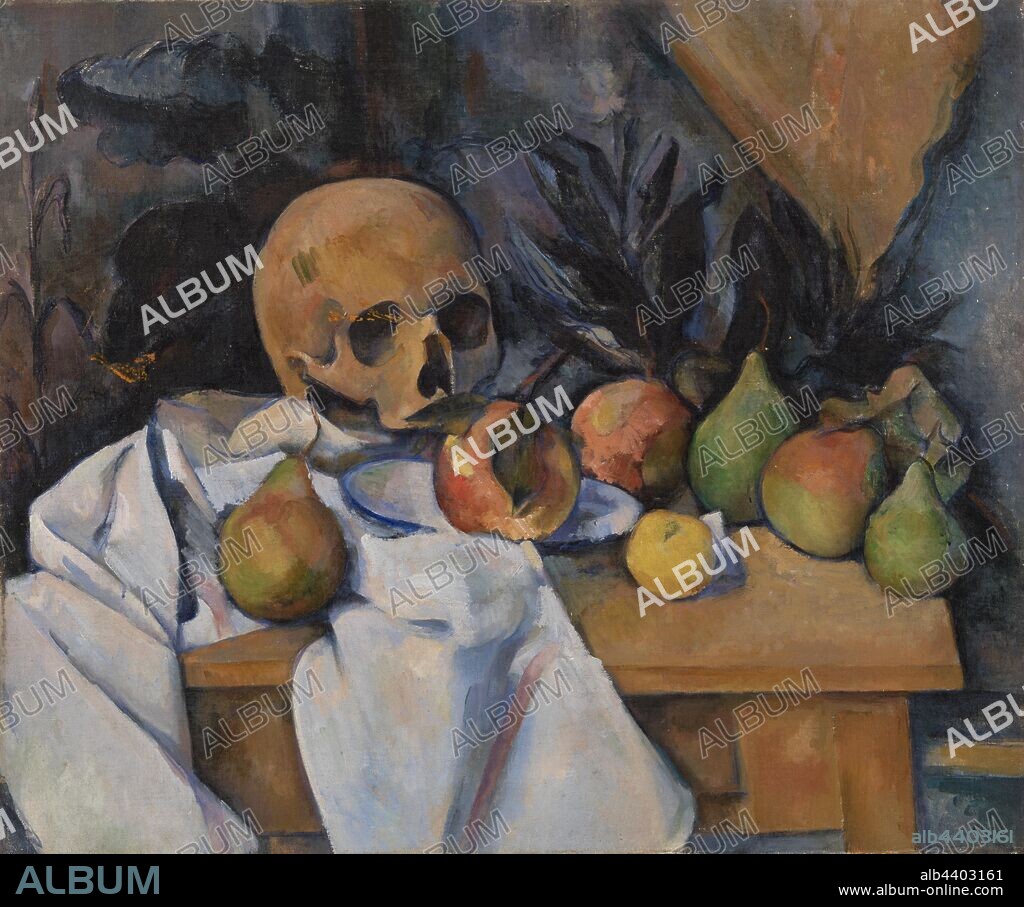alb4403161
Paul Cézanne: Still Life with Skull (Nature morte au crâne), Paul Cézanne, 1896–1898, Oil on canvas, Skulls appear frequently in the European still life tradition, serving as reminders of the fleetingness of life. Cézanne tended to avoid such props, however, favoring more ordinary household items like napkins, fruit, and ceramic vessels. It wasn't until the last decade of his career that Cézanne began to represent skulls with some regularity--perhaps reflecting a preoccupation with his own mortality. The smudges of orange paint across the eye socket are probably the result of this canvas leaning against another in his Aix-en-Provence studio., Overall: 21 3/8 x 25 3/4 in. (54.3 x 65.4 cm).

|
Añadir a otro lightbox |
|
Añadir a otro lightbox |



¿Ya tienes cuenta? Iniciar sesión
¿No tienes cuenta? Regístrate
Compra esta imagen

Descripción:
Ver traducción automática
Paul Cézanne: Still Life with Skull (Nature morte au crâne), Paul Cézanne, 1896–1898, Oil on canvas, Skulls appear frequently in the European still life tradition, serving as reminders of the fleetingness of life. Cézanne tended to avoid such props, however, favoring more ordinary household items like napkins, fruit, and ceramic vessels. It wasn't until the last decade of his career that Cézanne began to represent skulls with some regularity--perhaps reflecting a preoccupation with his own mortality. The smudges of orange paint across the eye socket are probably the result of this canvas leaning against another in his Aix-en-Provence studio., Overall: 21 3/8 x 25 3/4 in. (54.3 x 65.4 cm)
Personas:
Crédito:
Album / quintlox
Autorizaciones:
Modelo: No - Propiedad: No
¿Preguntas relacionadas con los derechos?
¿Preguntas relacionadas con los derechos?
Tamaño imagen:
5760 x 4801 px | 79.1 MB
Tamaño impresión:
48.8 x 40.6 cm | 19.2 x 16.0 in (300 dpi)
 Pinterest
Pinterest Twitter
Twitter Facebook
Facebook Copiar enlace
Copiar enlace Email
Email
